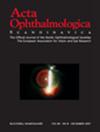How can we better evaluate paediatric progression of myopia and associated risk factors? Lessons from the COVID-19 pandemic: A systematic review
Abstract
Purpose
During the COVID-19 pandemic, home-based and remote learning—particularly using electronic devices—was rapidly pushed out. Increased near-work, screen time exposure and lack of outdoor time are risk factors that contribute to childhood myopia, but it is difficult to adopt recommendations from prior publications as a consistent limitation in the literature is the heterogeneity of research methodology. This review seeks to systematically evaluate how observational studies published during the pandemic have quantified and measured risk factors and myopia in school-going children and adolescents.
Methods
Three scientific databases (PubMed, CINAHL, Scopus) were systematically searched from March 2020 to April 2022. Findings from relevant studies were descriptively summarised in relation to the PICOS-based objective of the review.
Results
The final sample of 13 studies included research from six countries and comprised 1 411 908 children and adolescents. The majority of studies (N = 10; 76.9%) used spherical equivalent refraction (SER) of −0.5 dioptres or lower as a common definition of myopia. Most studies (77.8%) measuring screen time exposure found it higher during COVID-19 compared to pre-COVID, but only one study used objective measurement of screen time. The average critical appraisal score of the sample was only 66.1%, with a considerable number of studies failing to identify and adjust for potential confounders.
Conclusion
Future studies should consider emergent objective and validated measures of risk factors, account for potential a priori confounders and covariates and ensure more representativeness in the sociodemographic makeup of their samples.

 求助内容:
求助内容: 应助结果提醒方式:
应助结果提醒方式:


